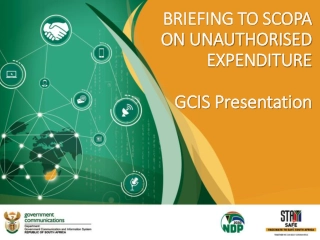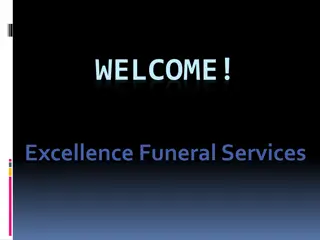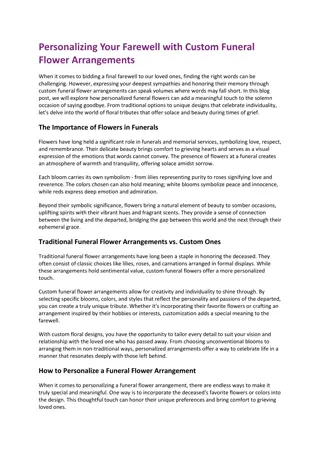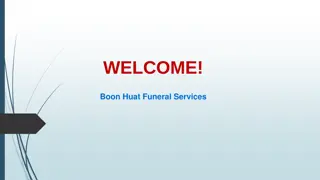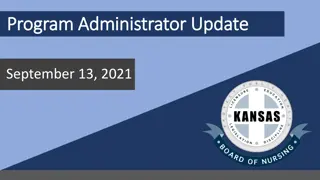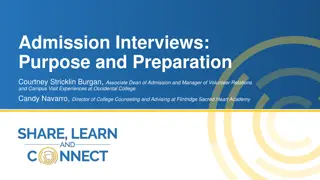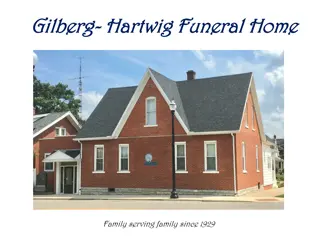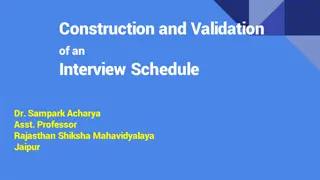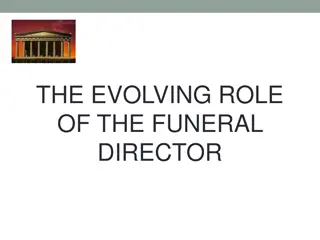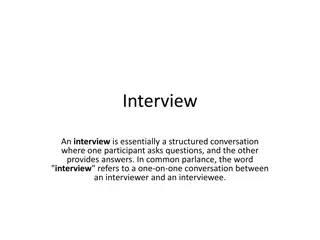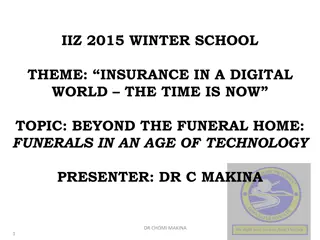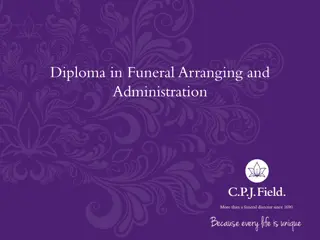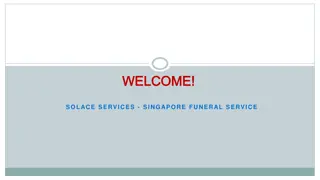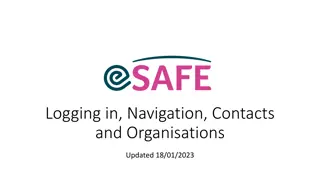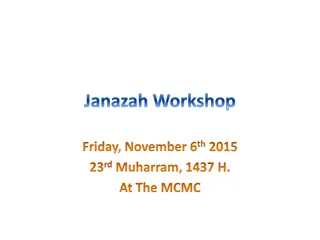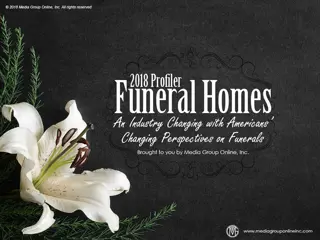Guide to Conducting Funeral Services: Initial Contacts, Interviews, Liturgies, and Follow-Up
When tasked with overseeing a funeral, it is essential to understand the responsibilities, protocols, and intricacies involved. This guide provides insights into handling initial contacts, conducting interviews with the family, selecting appropriate liturgies, and following up after the service to offer support. Embrace the privilege of leading this sacred ceremony and navigate the process with compassion and respect for the grieving families.
Uploaded on Sep 06, 2024 | 1 Views
Download Presentation

Please find below an Image/Link to download the presentation.
The content on the website is provided AS IS for your information and personal use only. It may not be sold, licensed, or shared on other websites without obtaining consent from the author. Download presentation by click this link. If you encounter any issues during the download, it is possible that the publisher has removed the file from their server.
E N D
Presentation Transcript
SO, YOU HAVE BEEN ASKED TO DO A FUNERAL! A guide to doing the initial contacts, interviews, liturgies and follow up.
FIRST THINGS FIRST! Help! I have been called to do a funeral what do I need to know and do? Recognize that this is a deep privilege and honour for you to walk with your fellow parishioners in this way. You are in Charge of the liturgy and not someone else, not even the Funeral Director Your Roof, your rules clarify with your Rector/Regional Dean/Synod Office what the rules and customs are! Funerals are not done on Sundays unless there is a need to do so (health issues). Date and time of the Services that need to be done not set in stone until you have agreed Committals are not to be done in the dark. Need to be aware of this in the wintertime.
FIRST THINGS FIRST! Liturgical colour for the service is white: same as Baptism and Resurrection connection with Jesus. If you have a funeral pall, please make use of it. The theology of a pall Funeral Directors are a great help (and at times a great hinderance) use them and their knowledge to deal with the situation. They serve the family and their needs, you lead family to the throne of God and to help God help them. Some advice if you have to participate in an NKO. (Have a plan, stick to the plan, be ready for anything; you are there for the grievers; not about you).
SO YOU NEED TO GO AND SEE THE FAMILY! A funeral Interview story or two - Charlottetown, Labrador Location, date and time for it to happen prefer a neutral place. You have two ears and one mouth listen twice as much as you speak Take the Liturgy form with you and use it to keep you on track, to get what you need and to help the people think about what needs to be done next. Lead from out front as a shepherd leads the flock. Take a Service Book and a hymn book with you Secular music must not have a message that would degrade the Gospel/Christian Values and must have a positive mention of God. Help them to make lists of things they need to attend to Listen to the stories the grieving tells about their life and the life of the Deceased Make sure that they have way(s) to connect with you (Phone, email) Setting up Eulogies/Family Tributes 10 minutes before the Liturgy MAID/Suicide
THE SERVICE ITSELF In speaking publicly at a funeral listen to identify something in a person s life that connects to the Christian life. Talk about Jesus, hope and the resurrection Remember, Rest and Resurrection Know what you know about life death and the beyond learn about what the Church believes Know that there are two forms of service within the BAS and there is one form of Burial in the BCP Know that we need to stick to music that the Church uses Know that it is okay to say no when you need to gently and pastorally The Moosehide procedure Committal - Learn to take missteps in stride
A WORD ABOUT THE LITURGIES BAS or BCP? Know who you are burying and know who is going to be there to participate in. Know that there are 2 liturgies in the BAS Form 1 and Form 2; recommend that you stick to form two because it is simpler and easier to work with. If you are involved in the funeral of a First Nations person make sure to get advice from an elder on what traditional pieces might need to be included blanket and name removing ceremony before you leave the Church.
Funerals should not be long and involved services they should be kept simple and to about 40 minutes at the Church. Motion standing up and sitting down is good for those whoa re in grief. People need to stand for the Creed if it is to be used and if that is the custom for the Prayers of the People. THE THINGS YOU NEED TO REMEMBER Remember that the service is the point when the healing begins for those who have suffered this loss. If the loss is personal to you, then you need to find time to grieve and to deal with thing away from the grievers and it is very important to do this. Remember that their loss is not your loss be aware of transference! Follow up email, phone call, visit. Not doing it causes pain, aguish and isolation ingrief - and people to drift away from community. There is such a thing as a good death and that as Christians, we do not have to fear death Christ is with us all the way including through the valley of the shadow of death. Speak of the hope we have in Christ and that we will see or loved ones again. Patience is key in all that we do, and it will be tested Virtue is earned not given. Concentrate on Jesus and the Gospel the sure and certain hope of the Resurrection to eternal life to live with loved ones in Christ.

 undefined
undefined




 undefined
undefined



